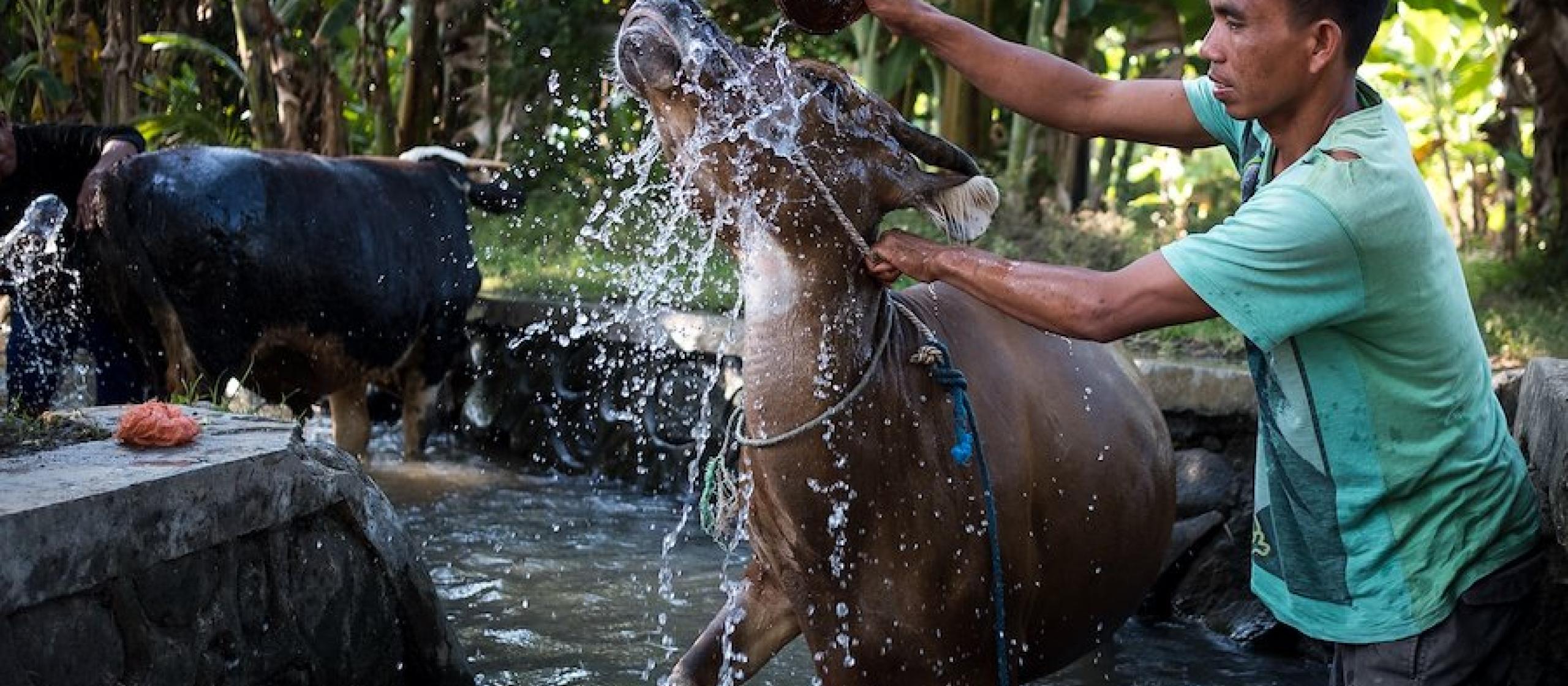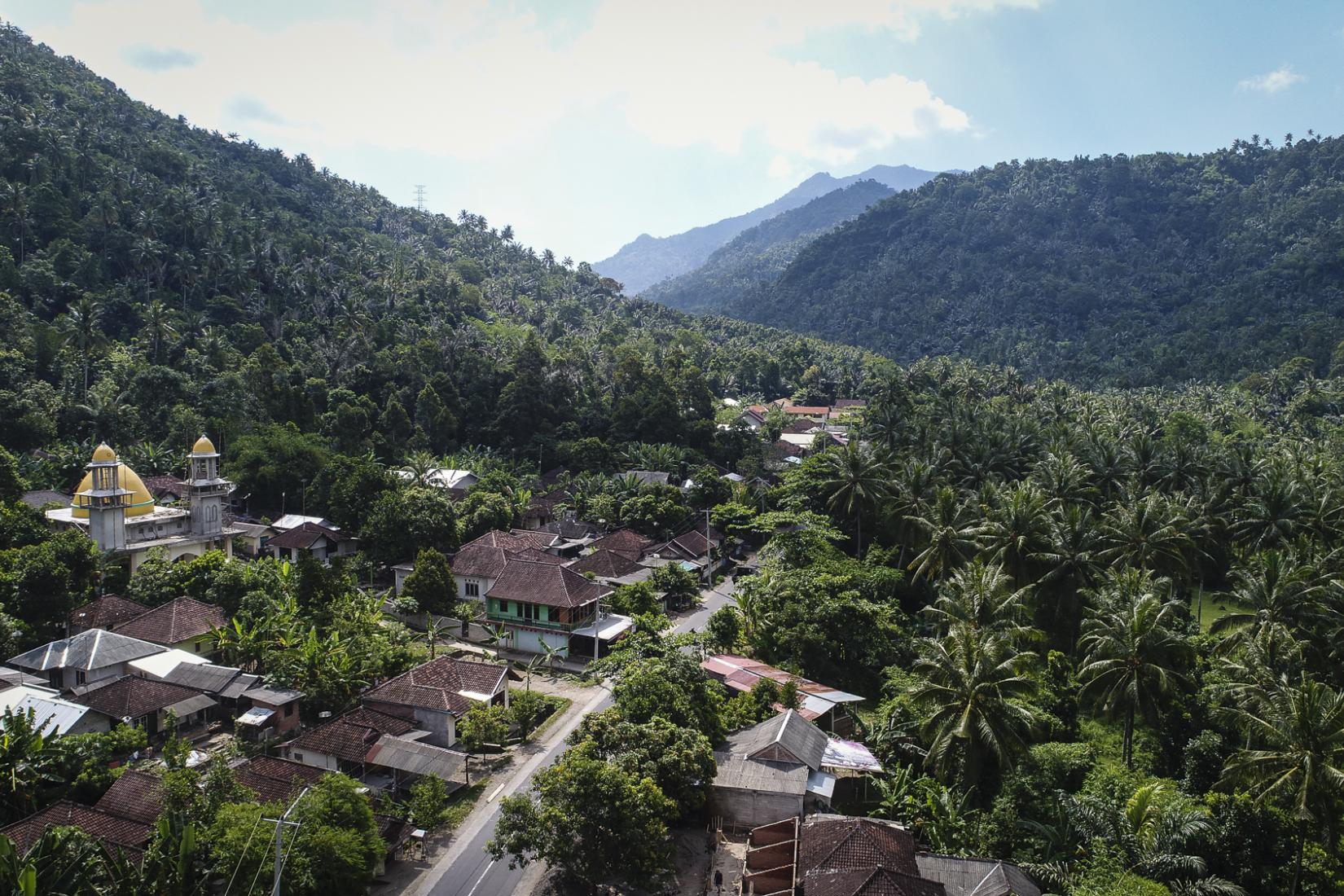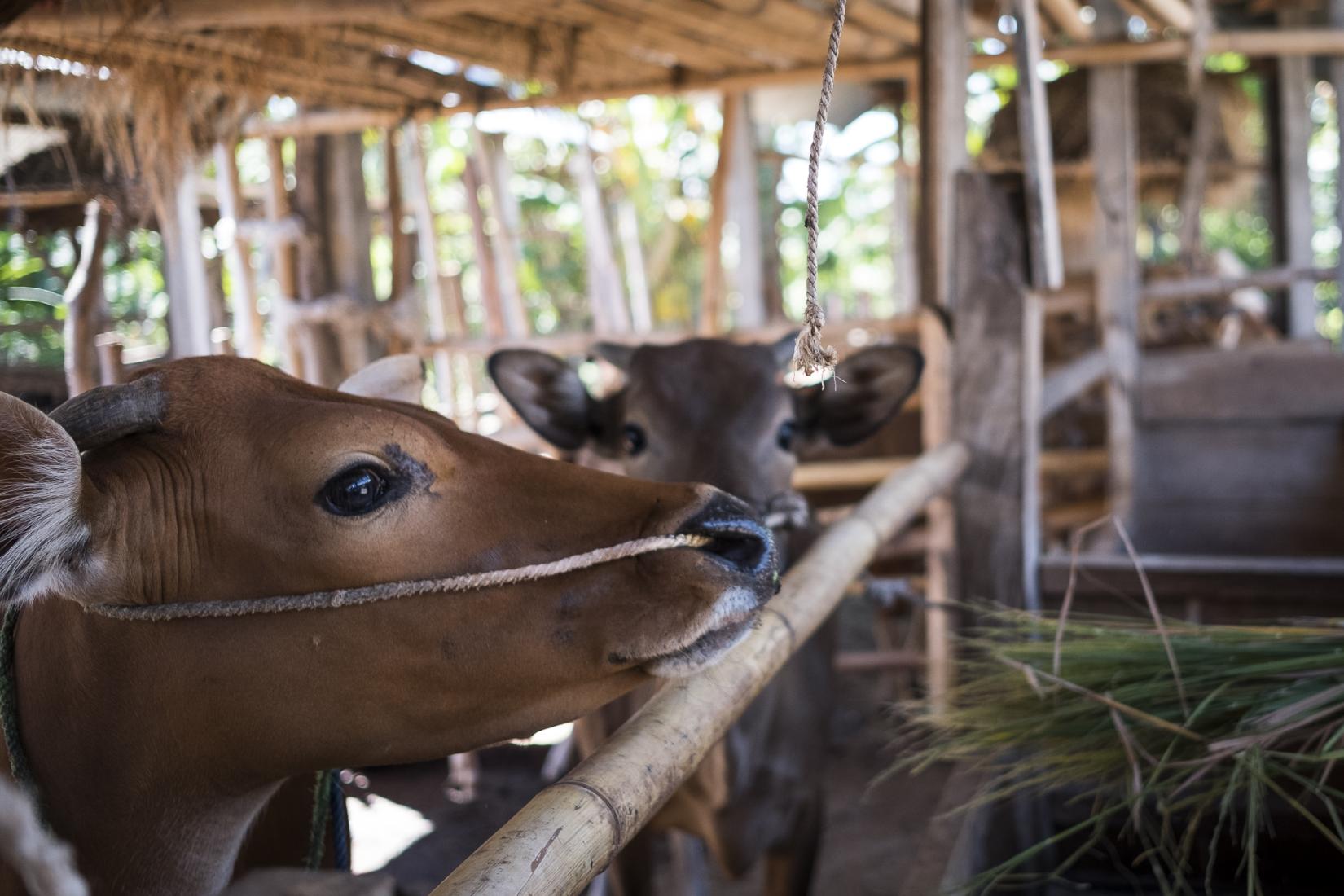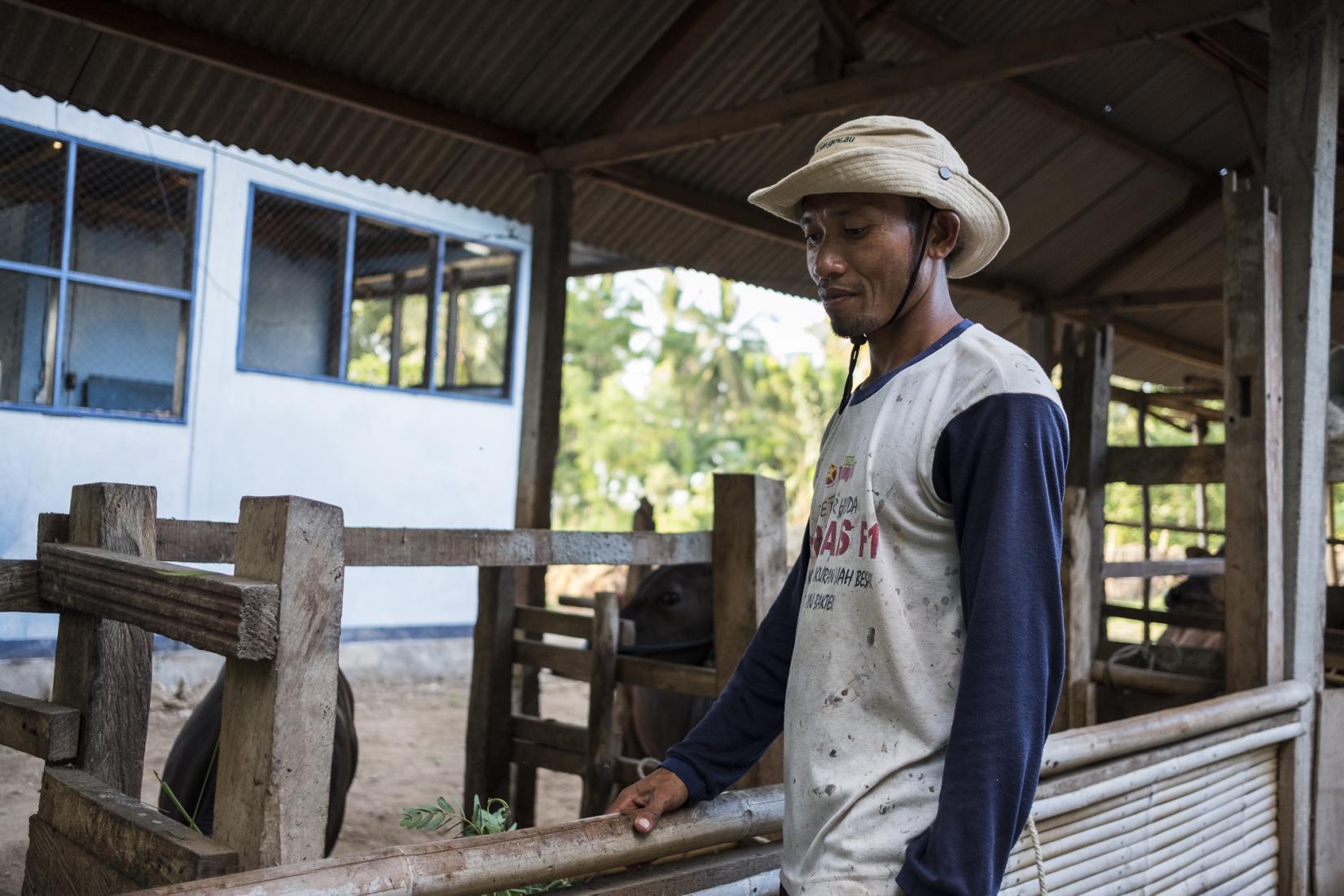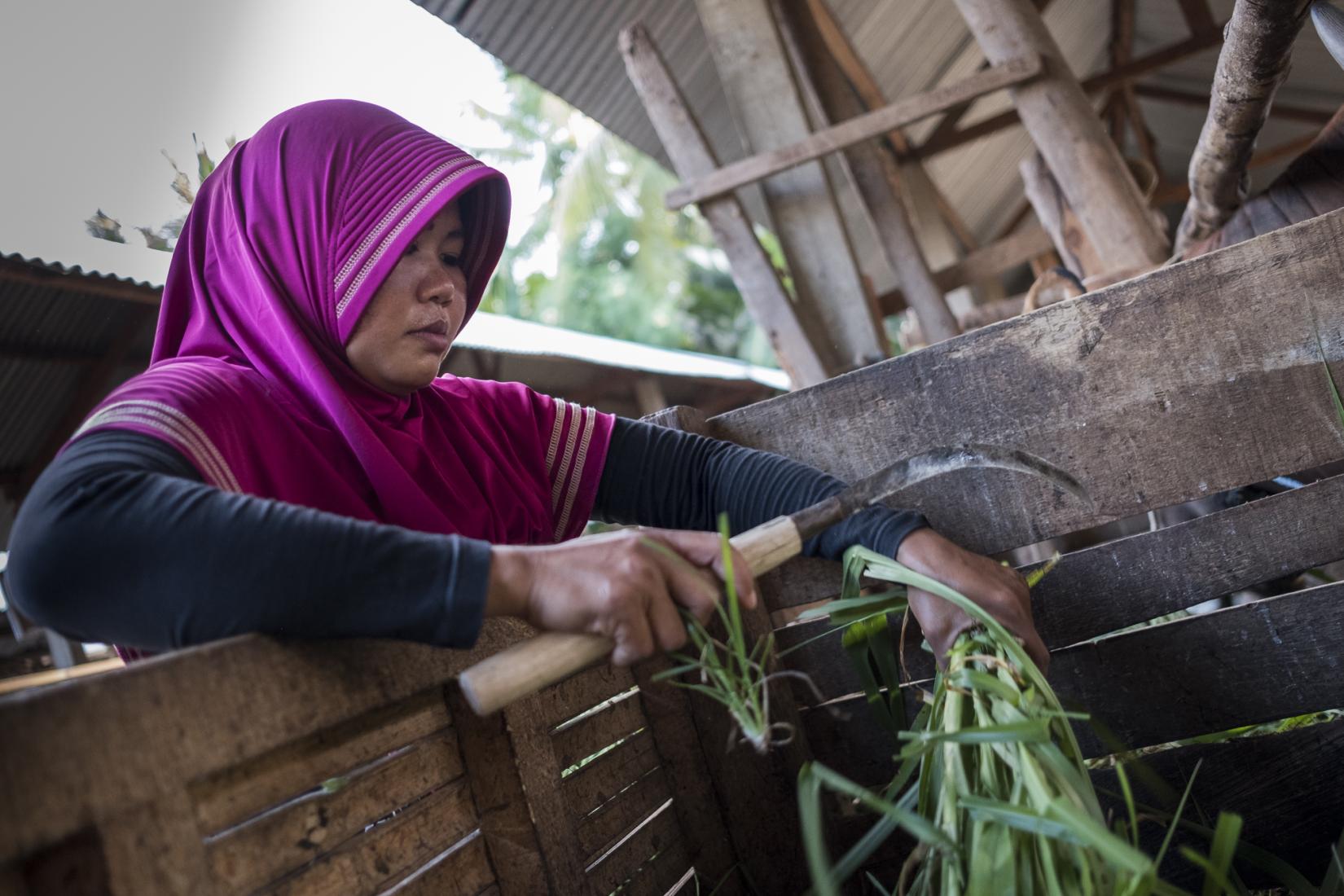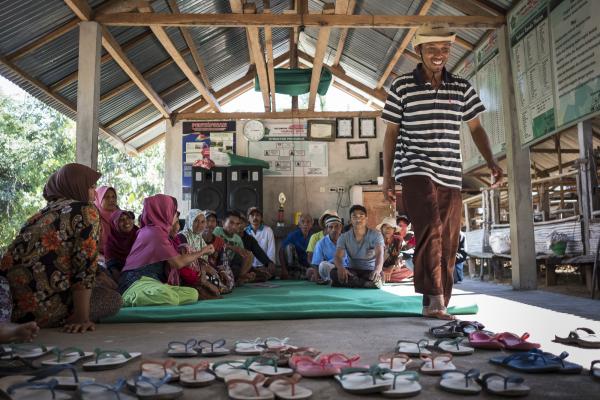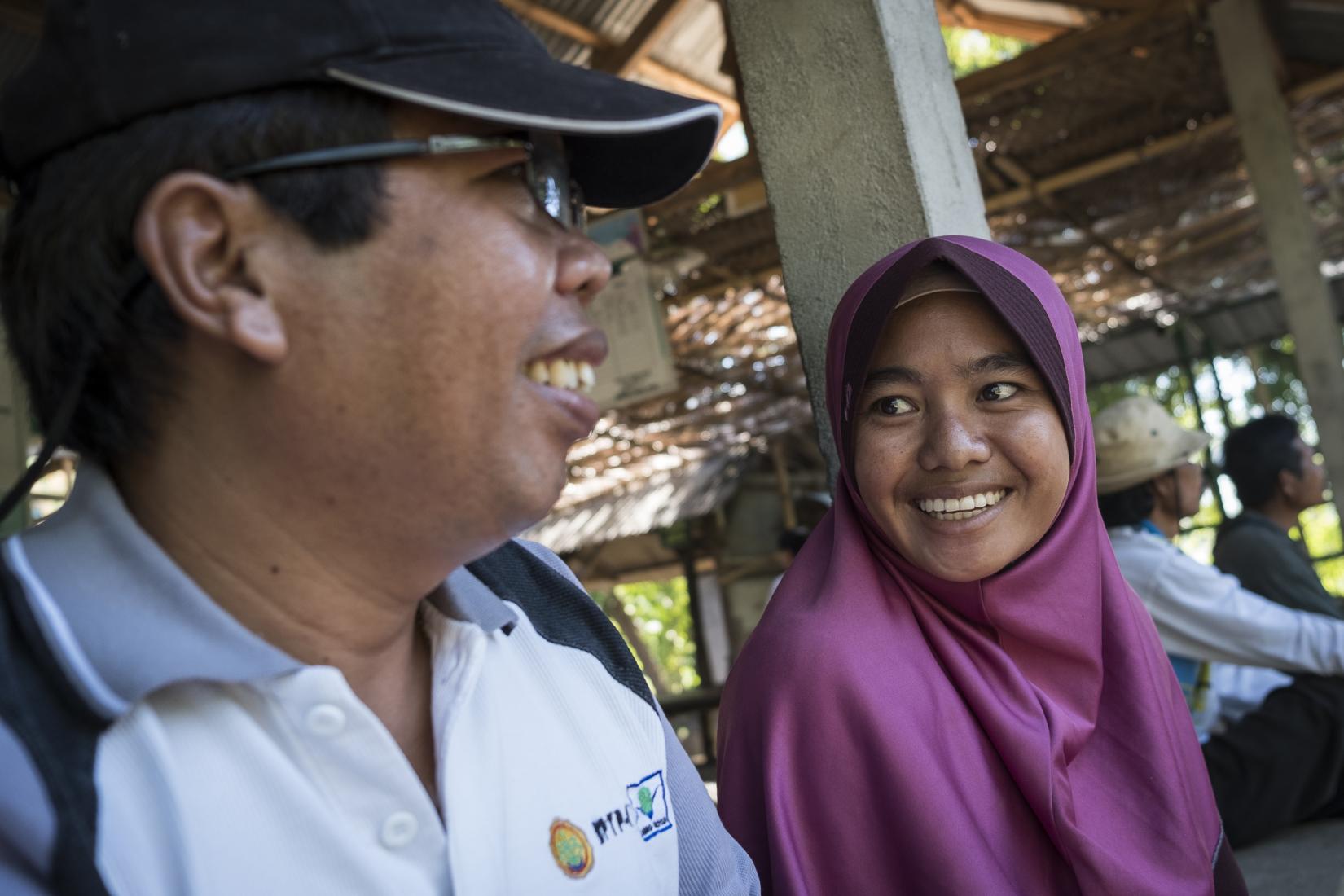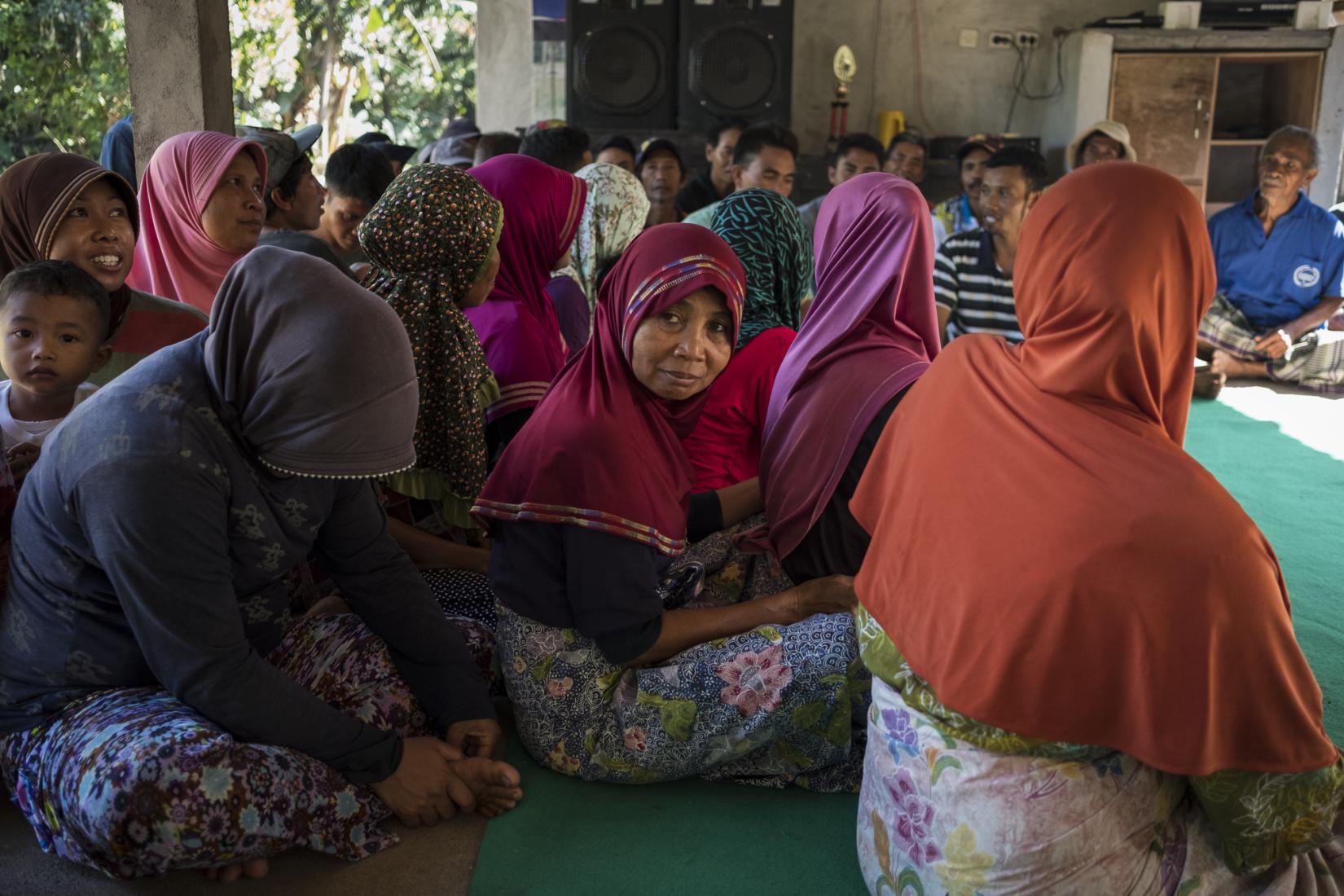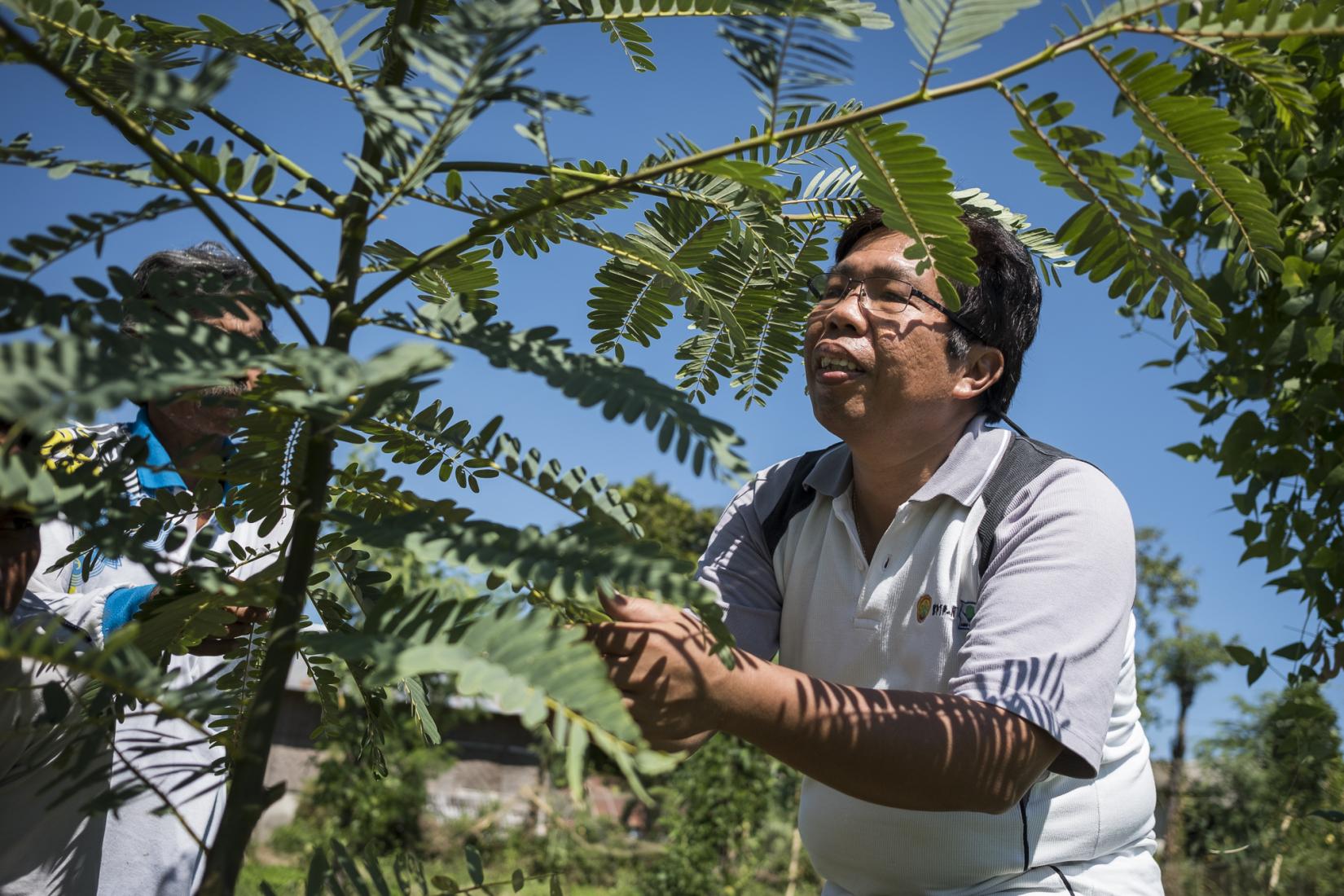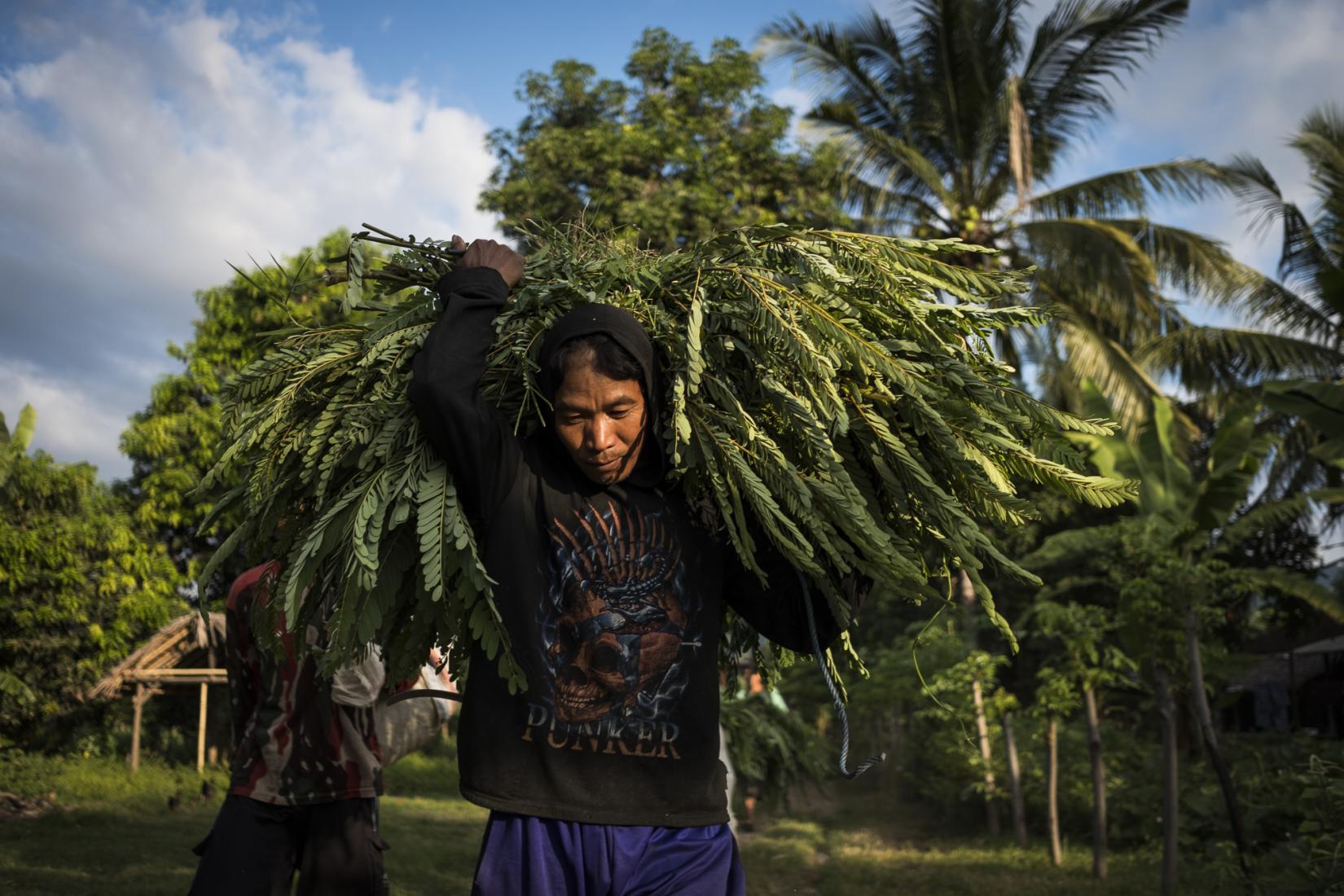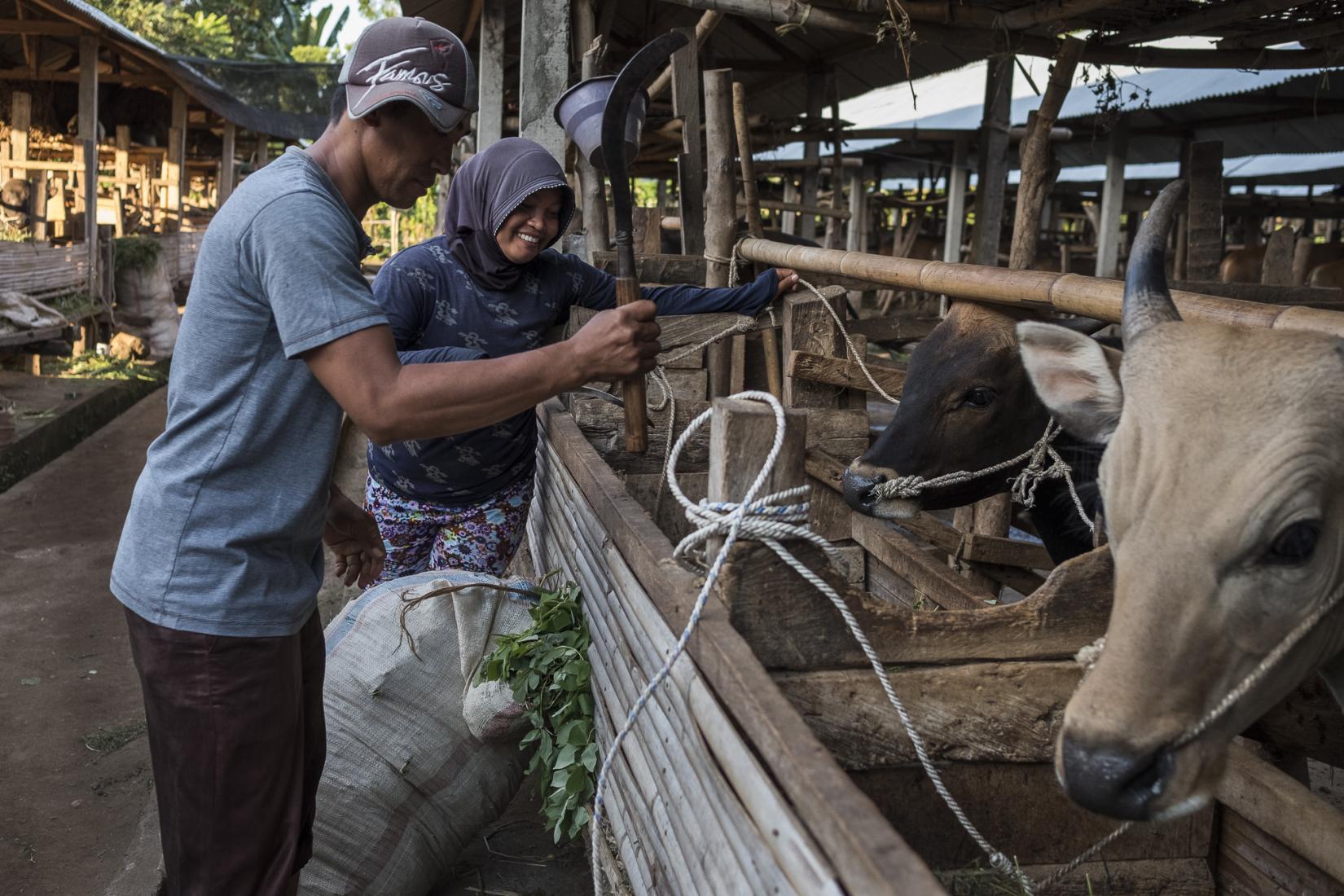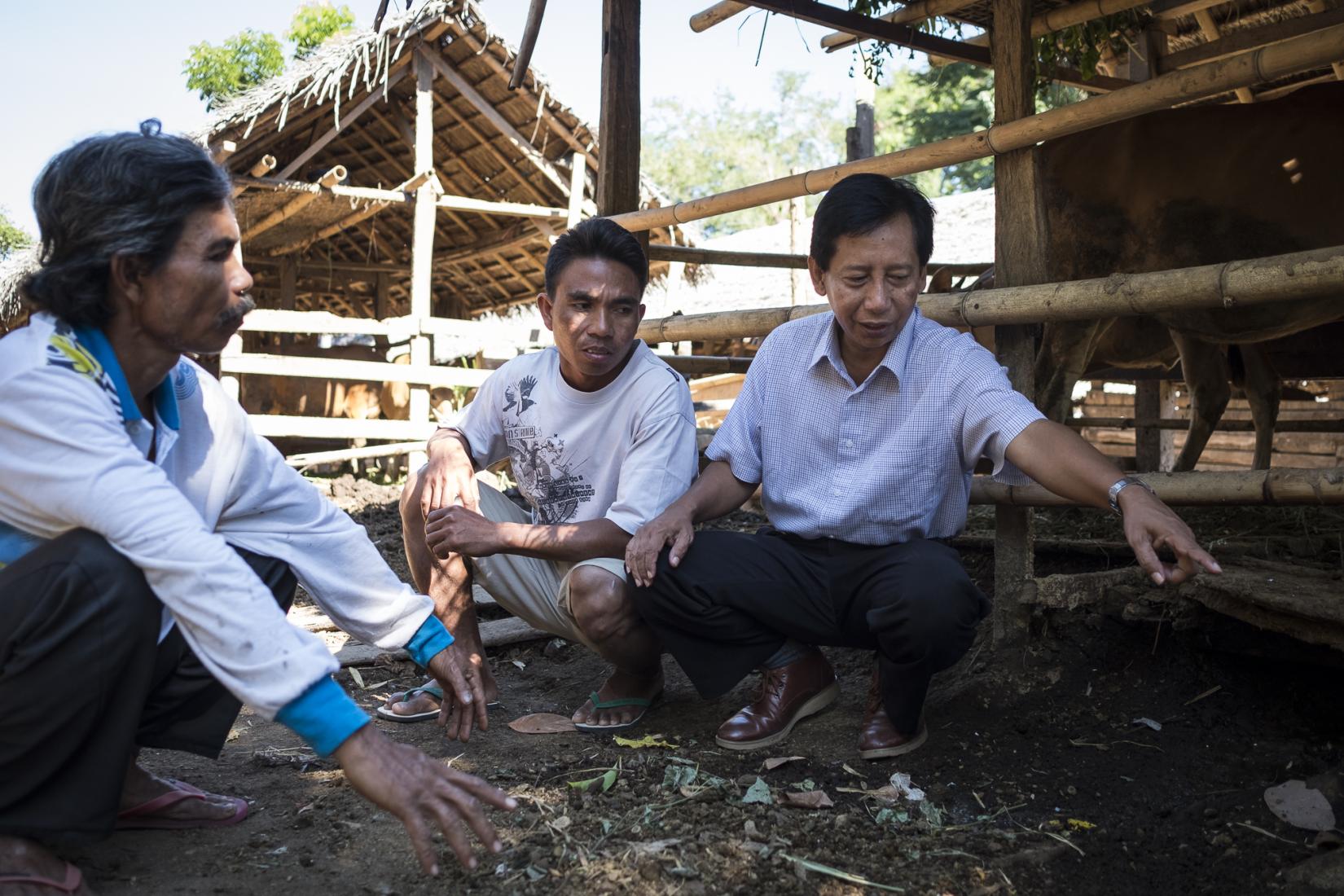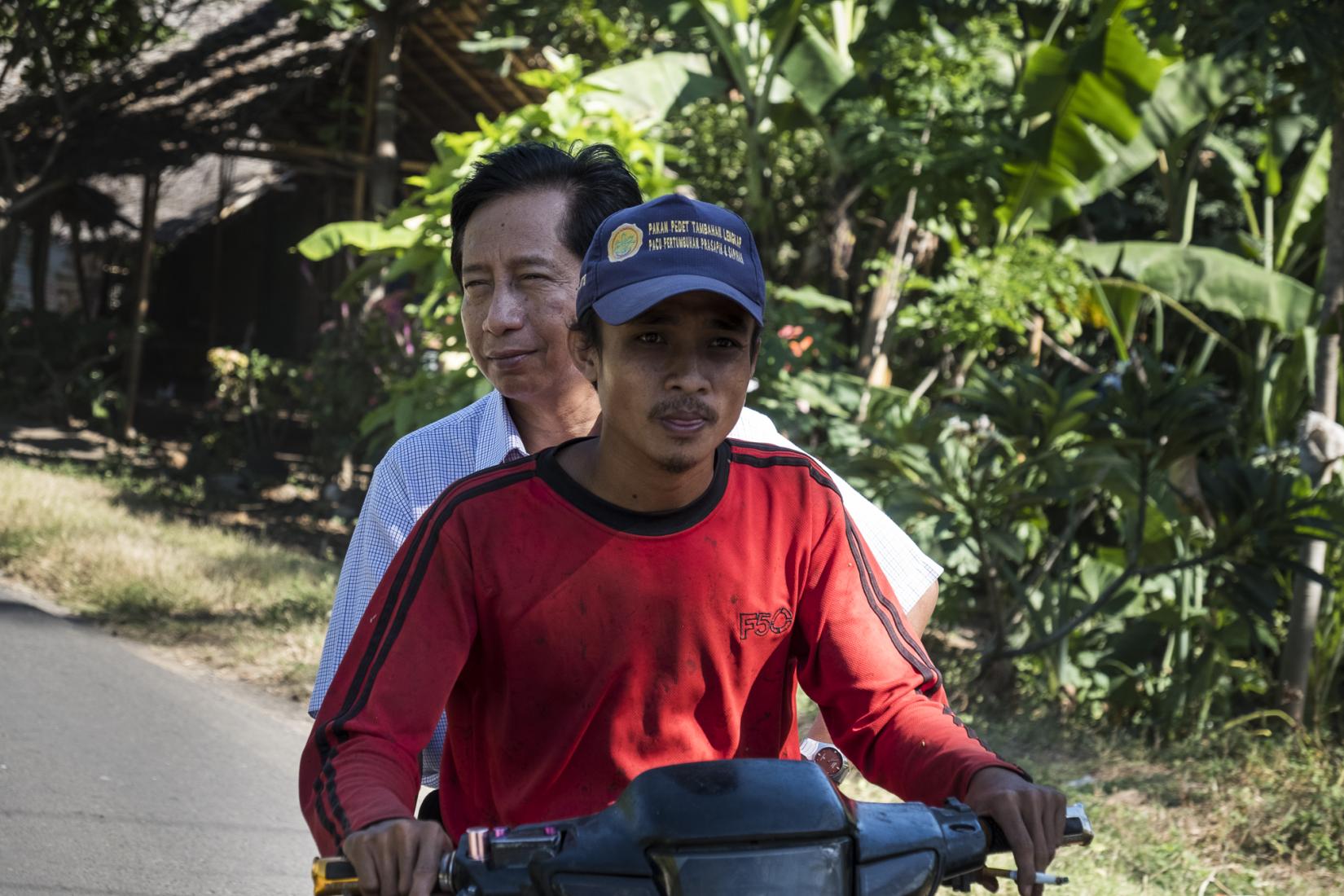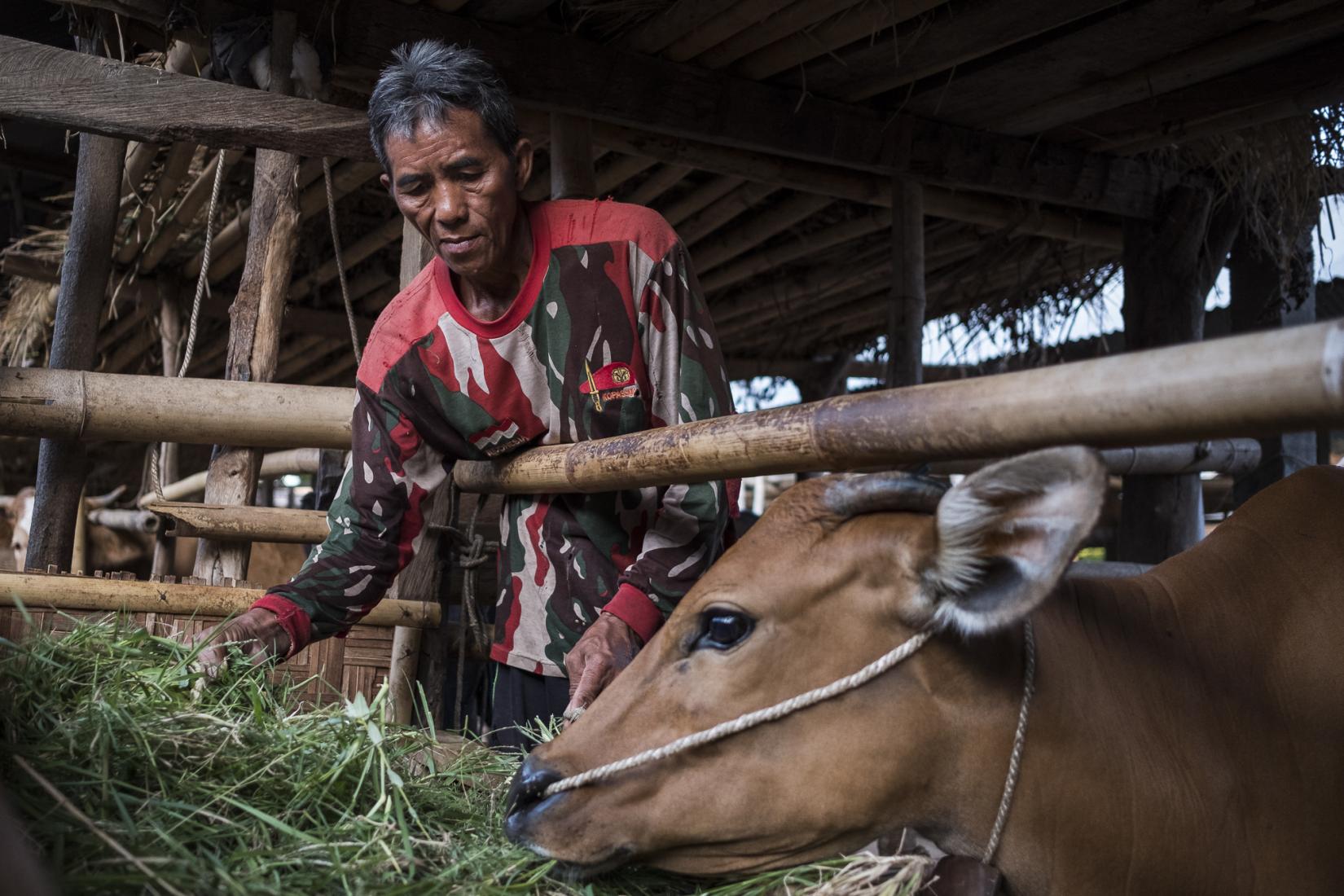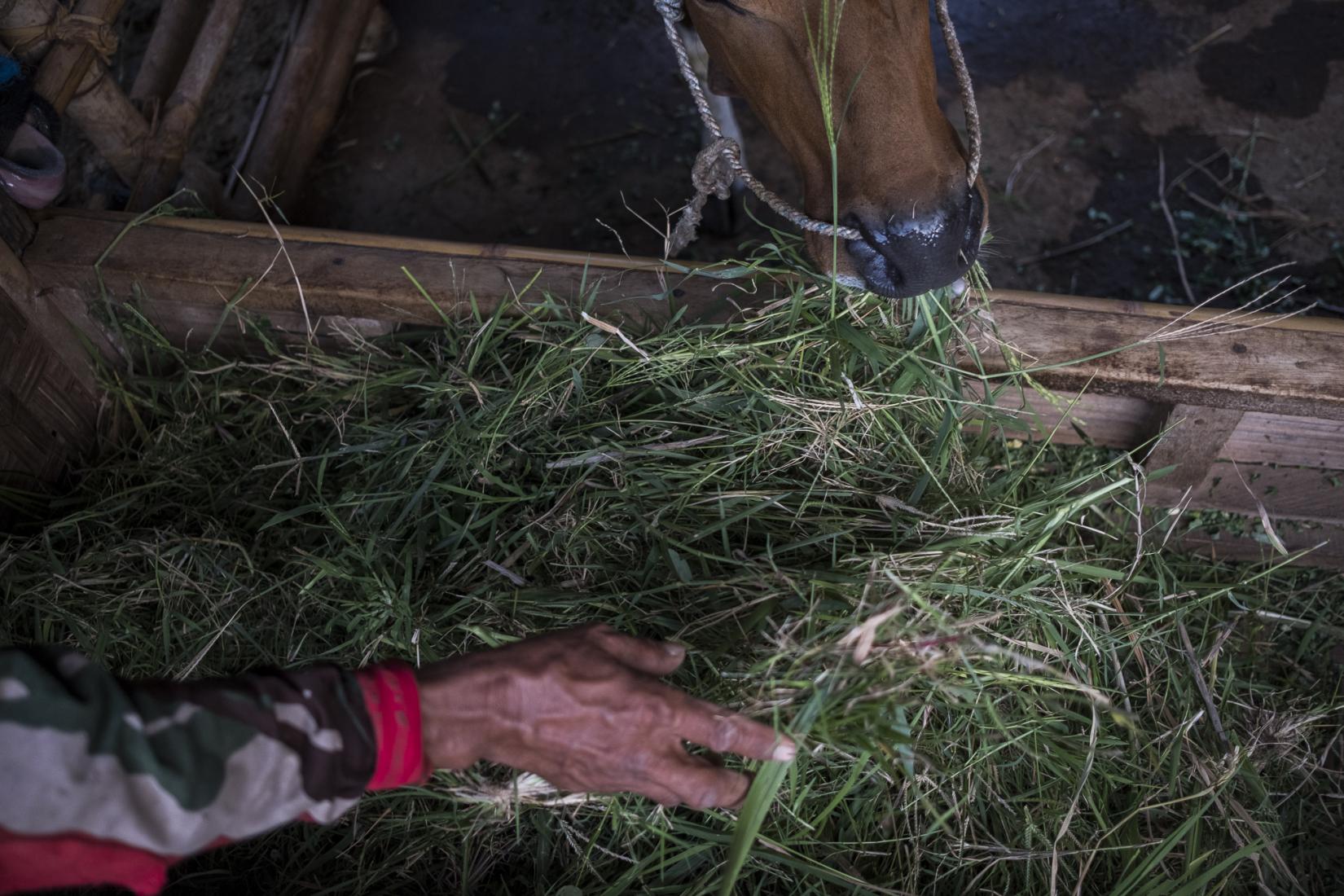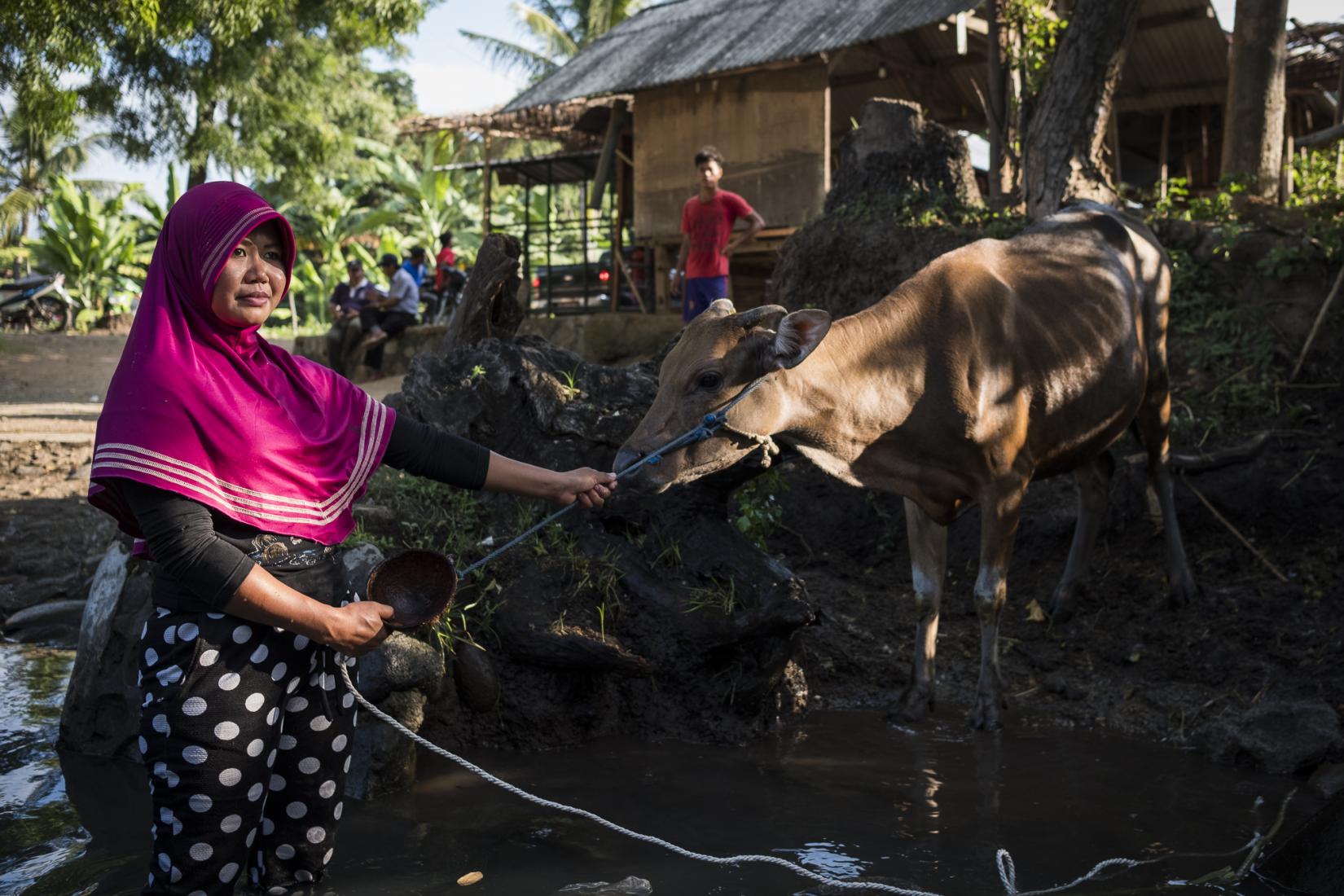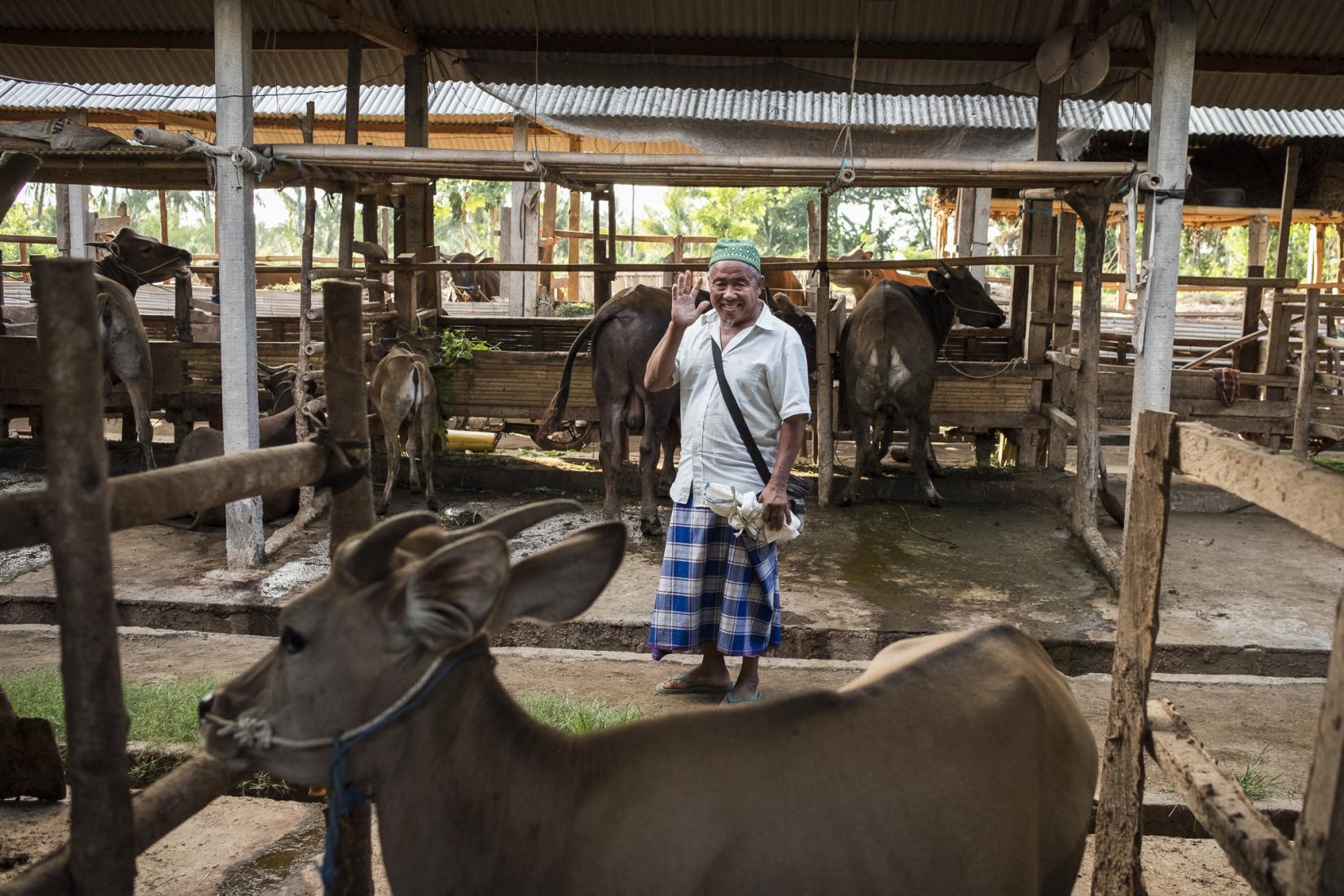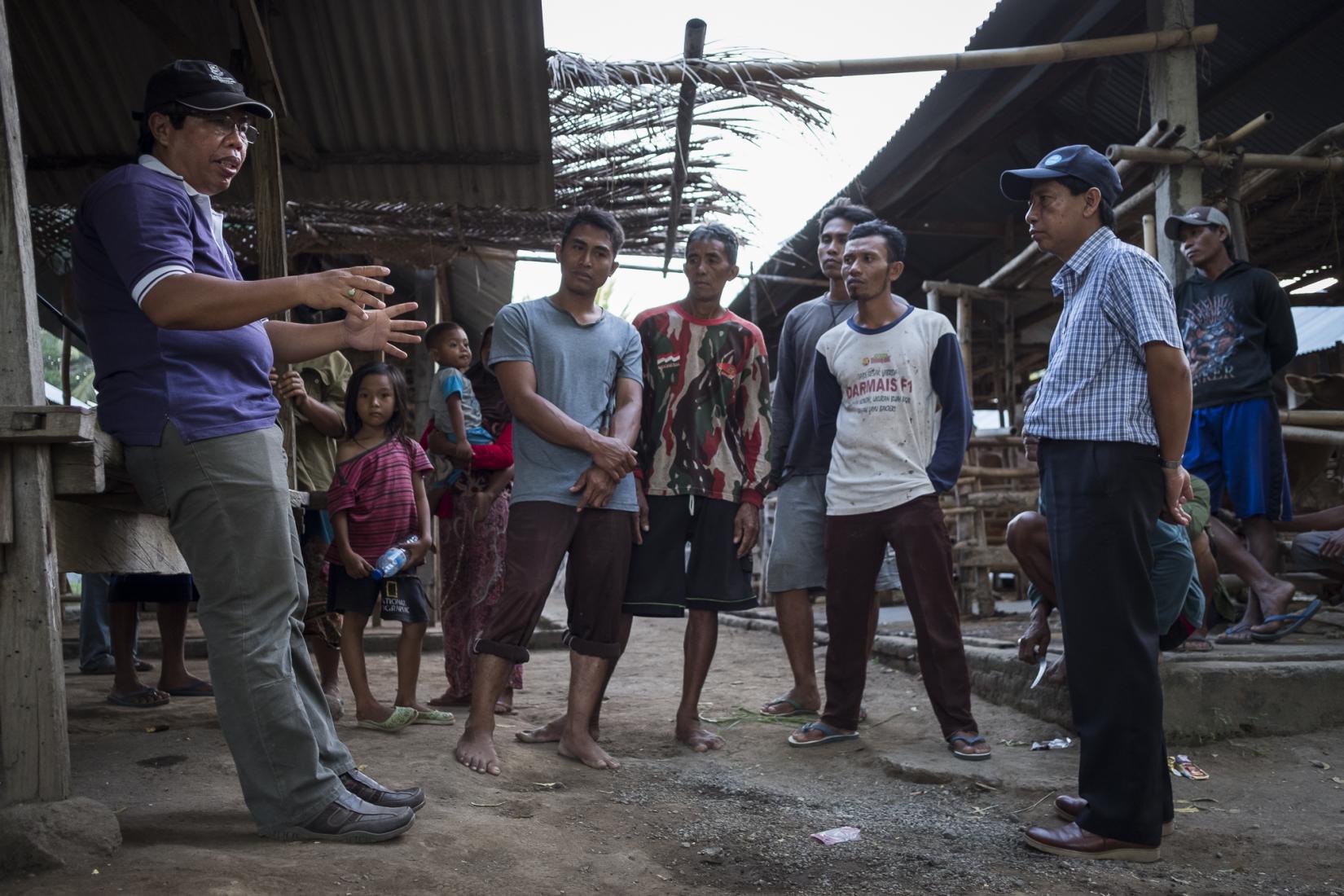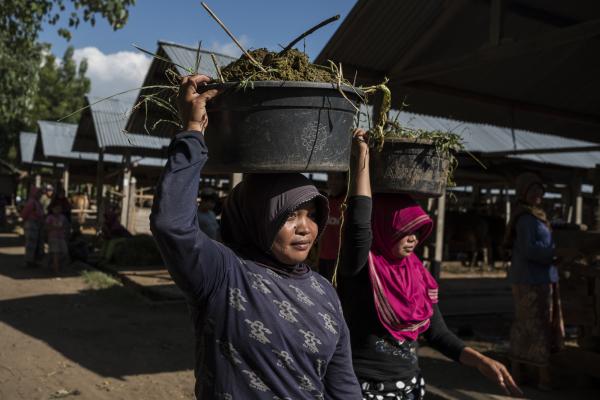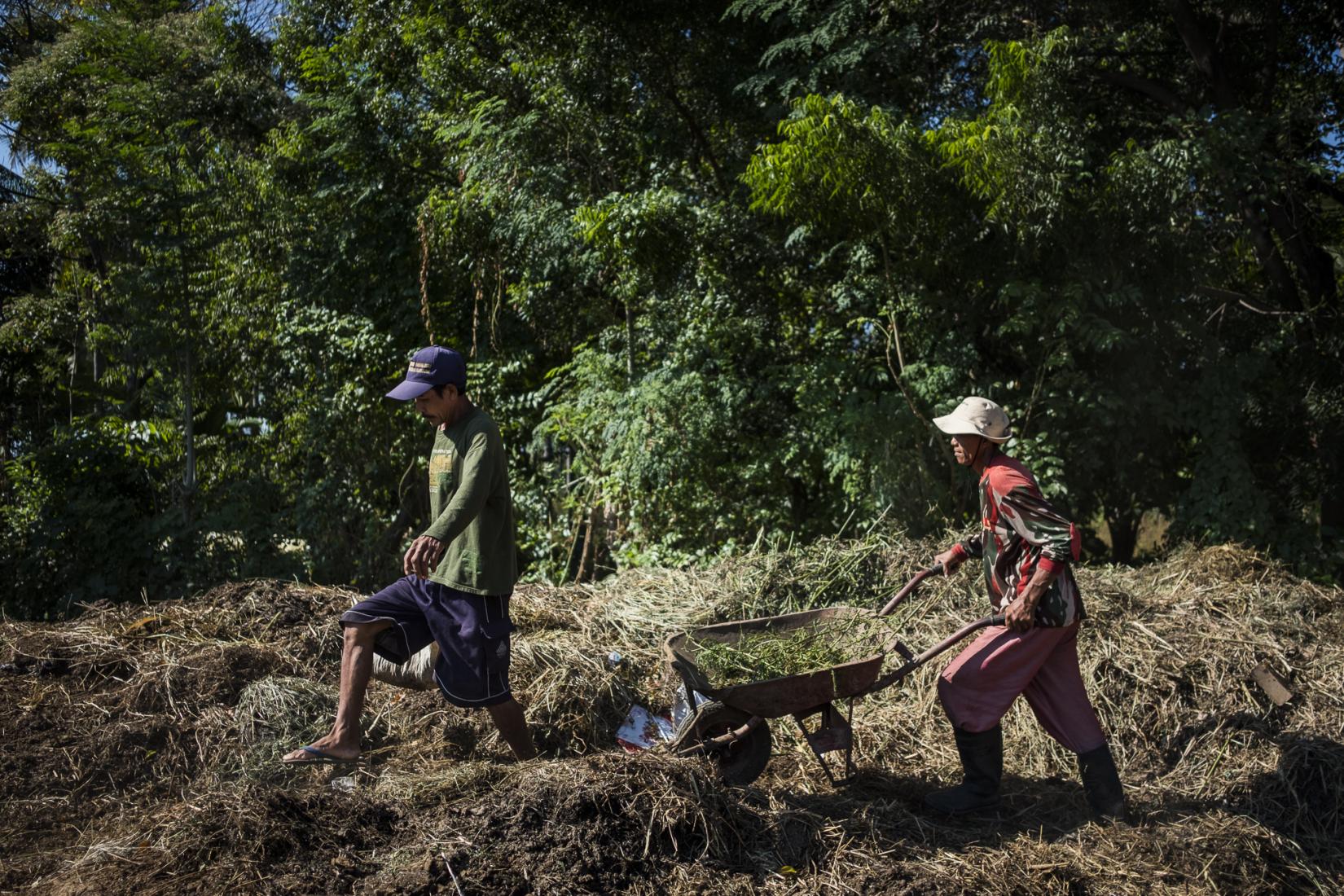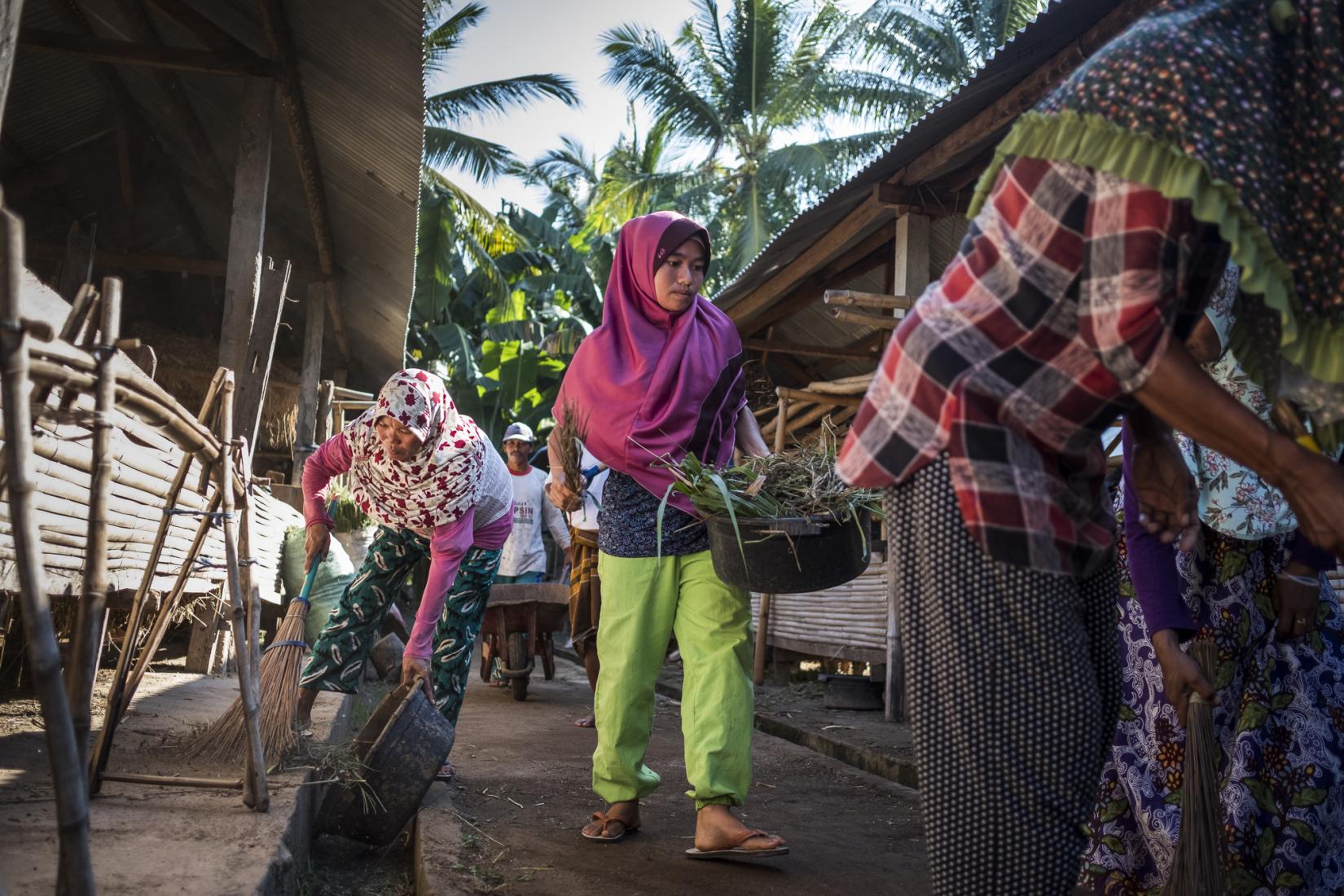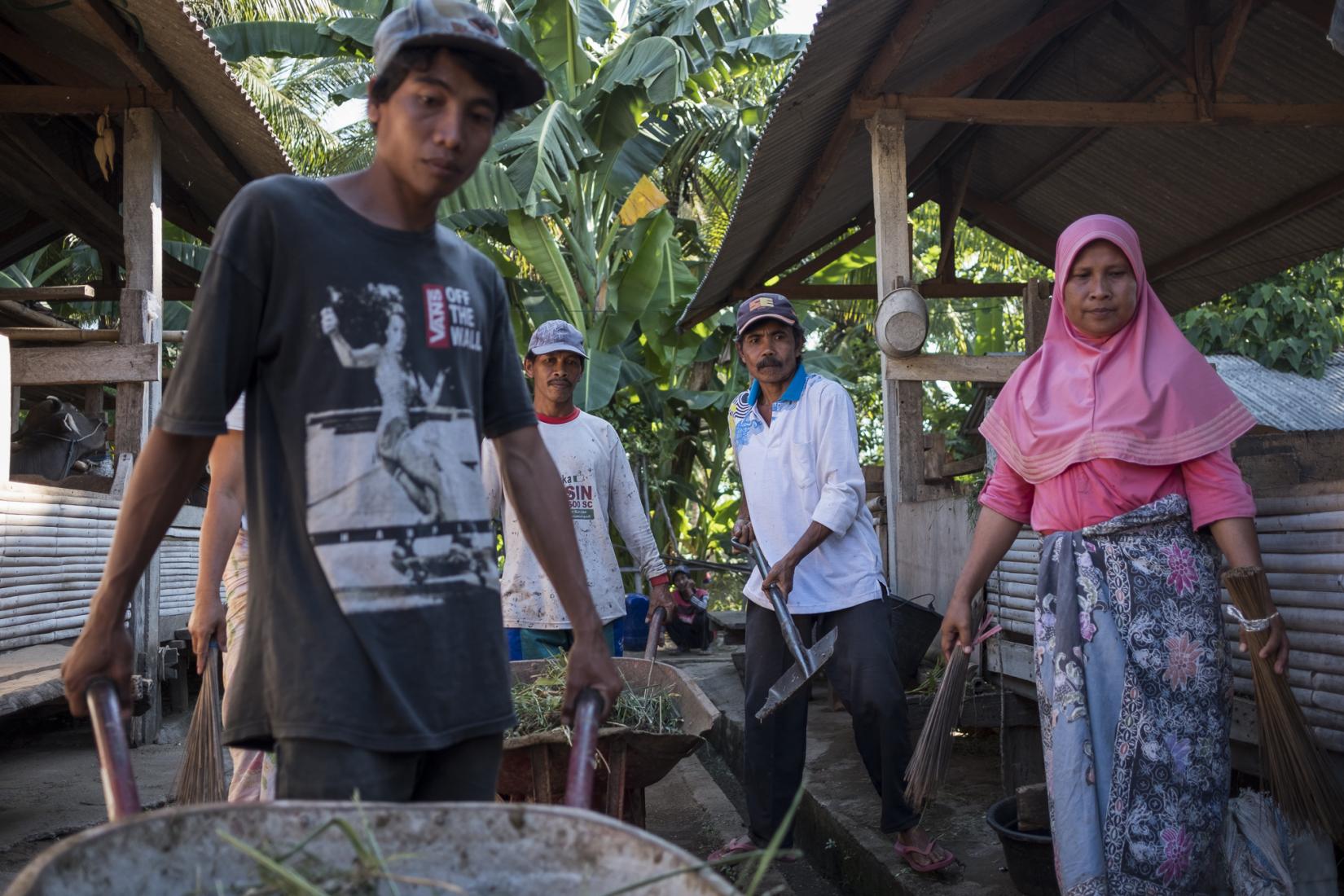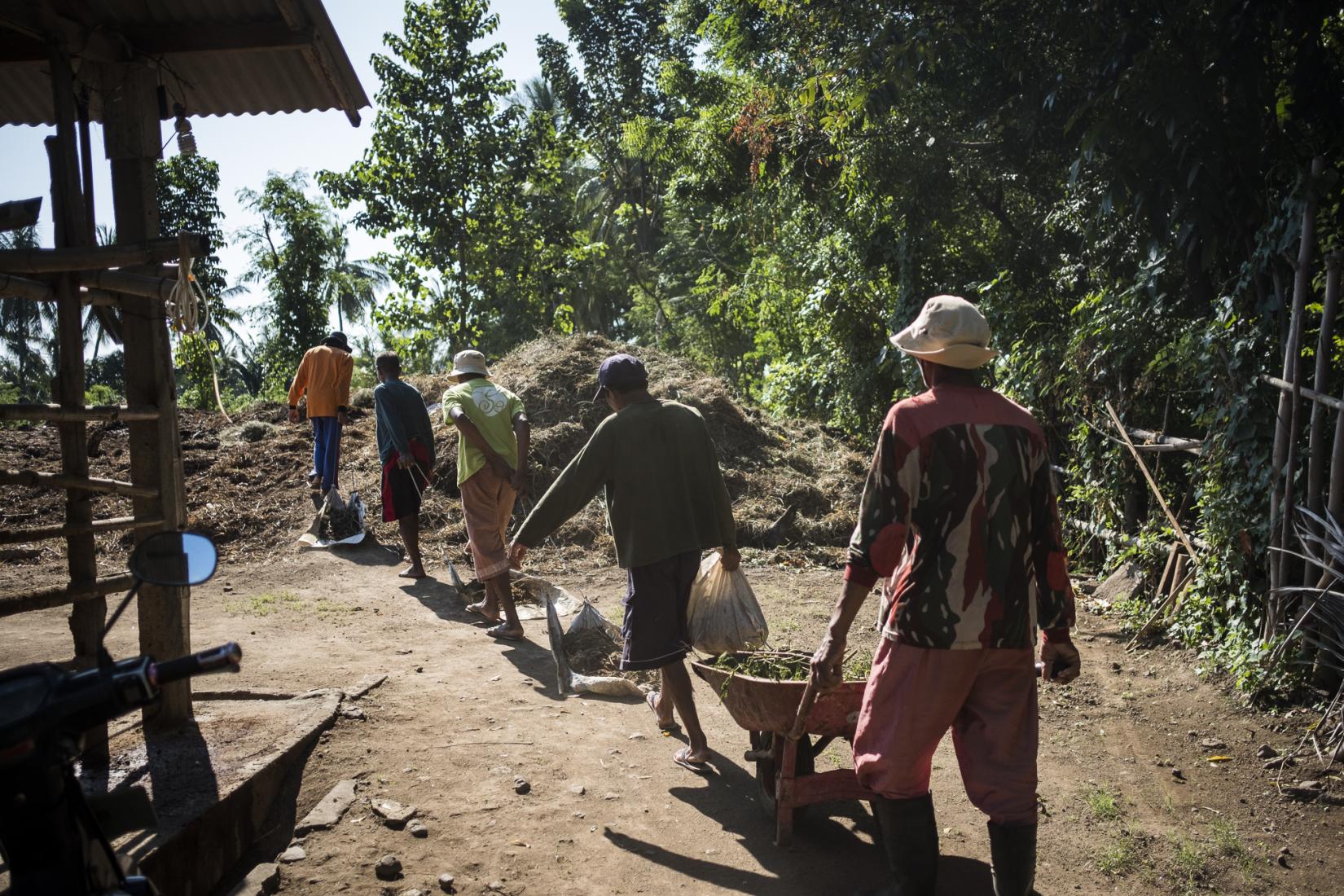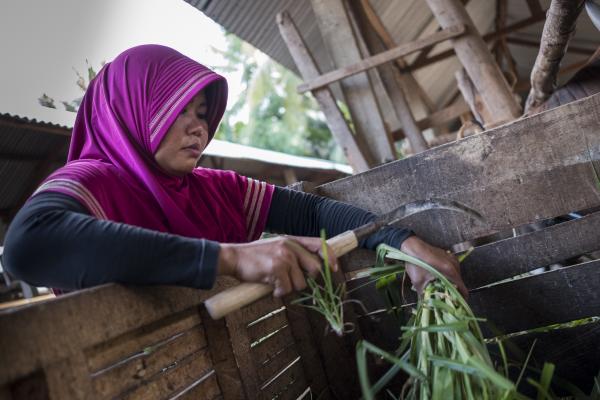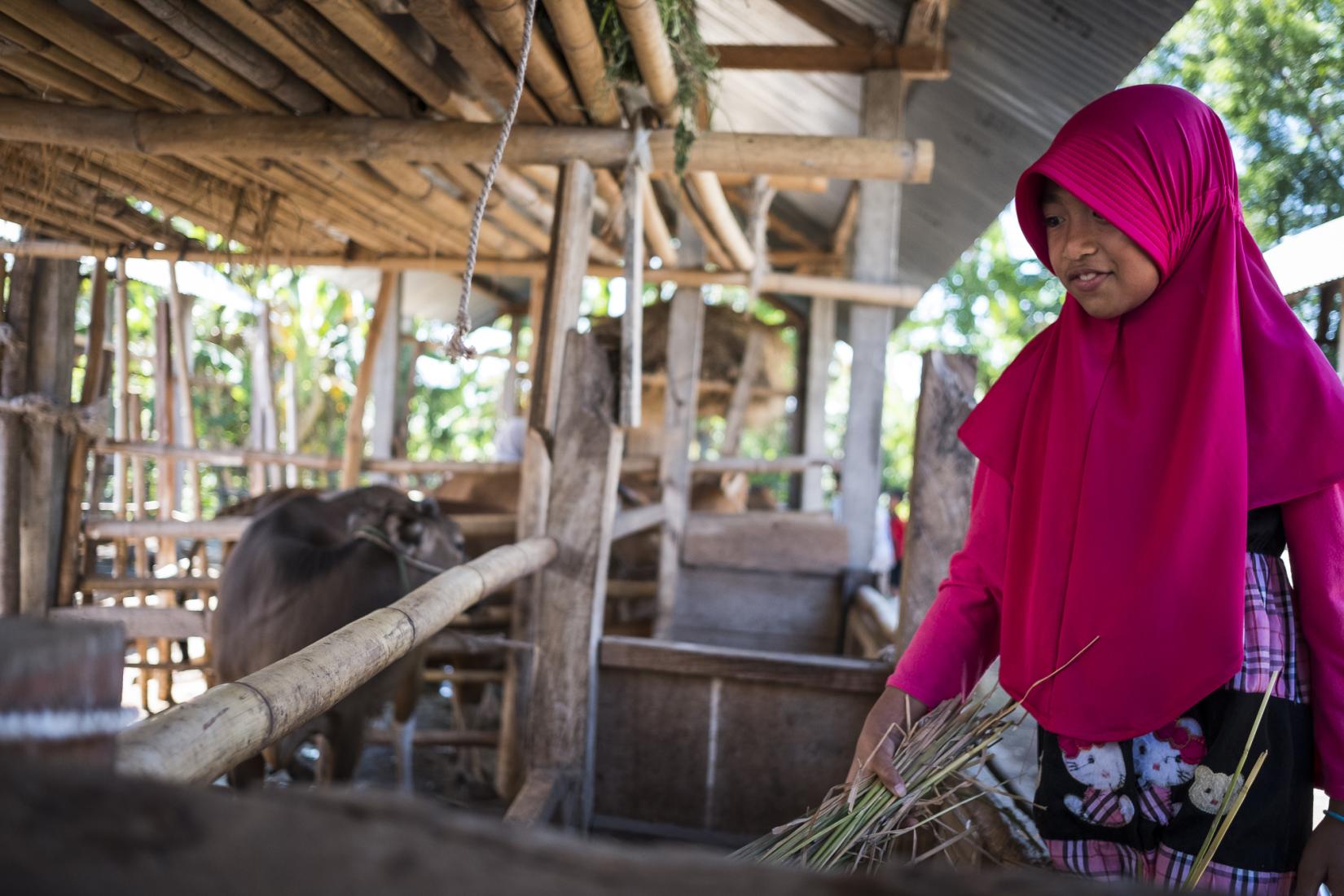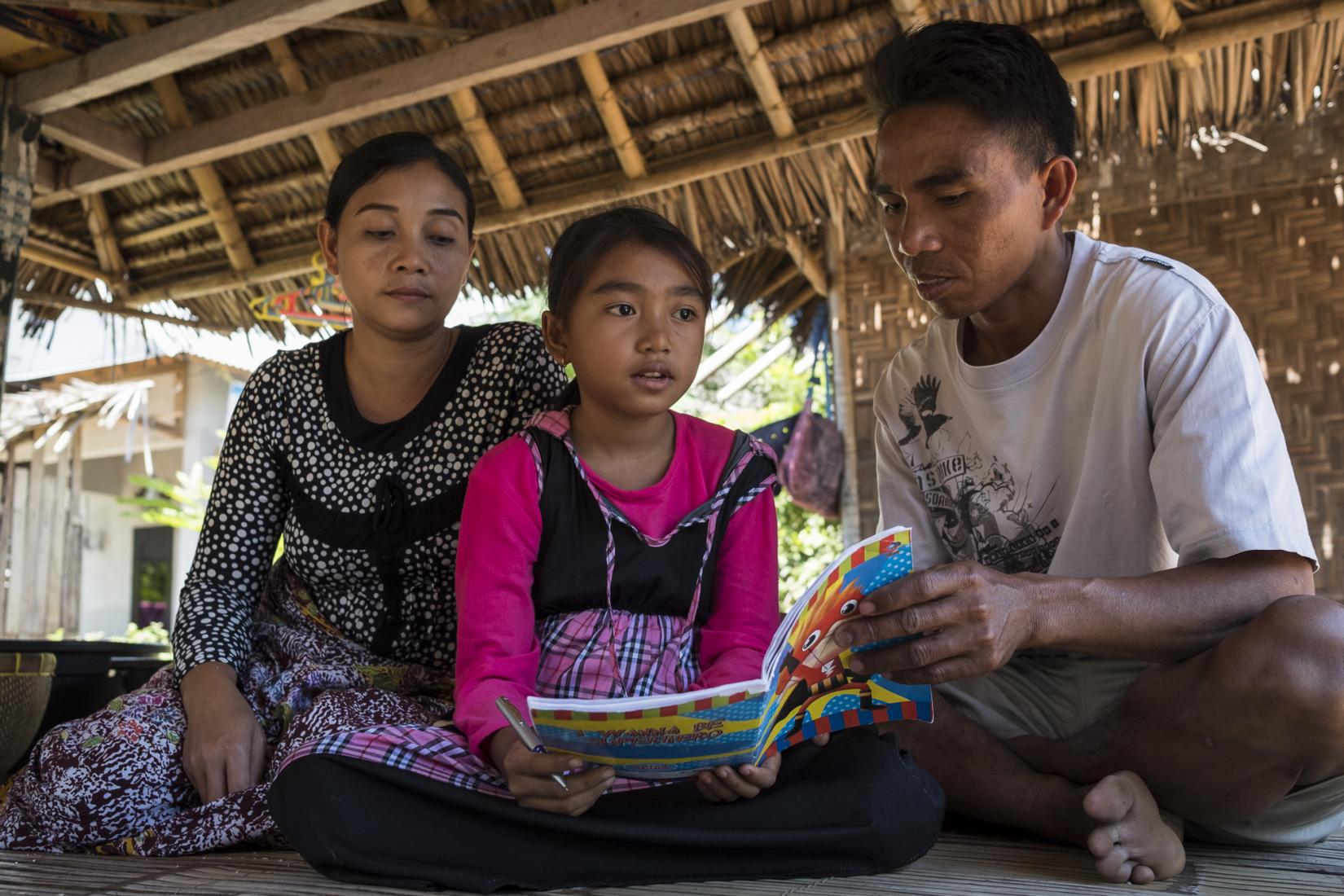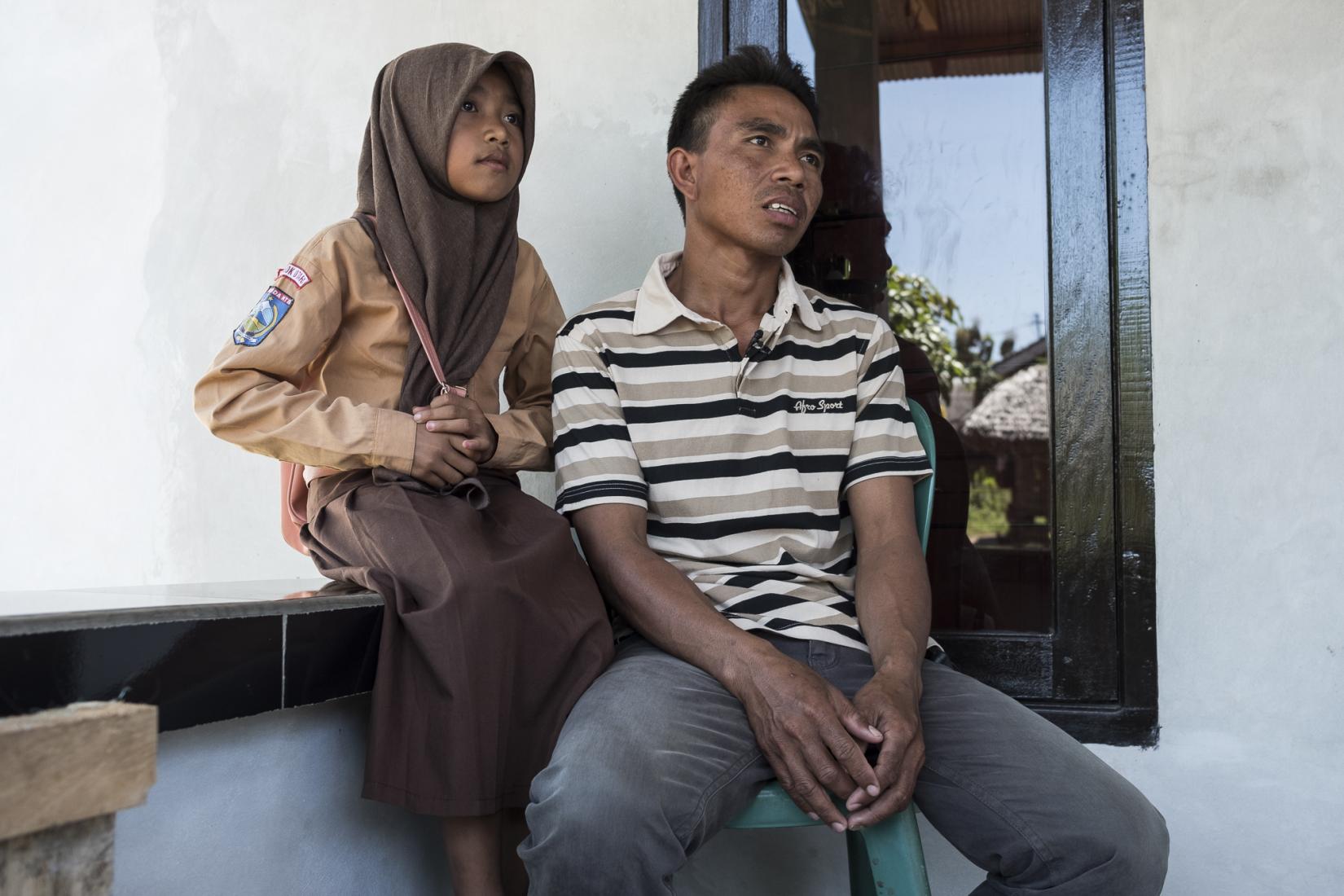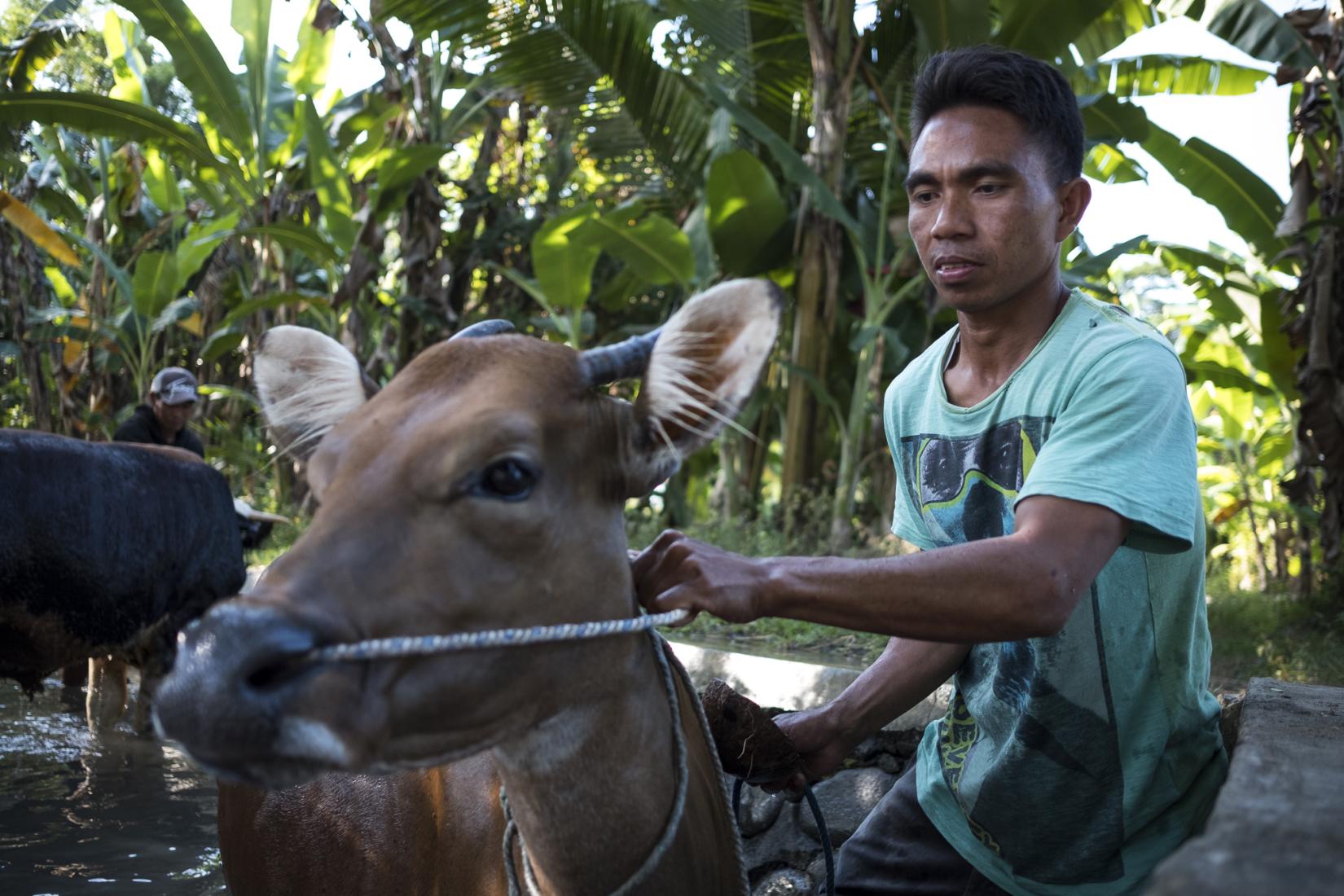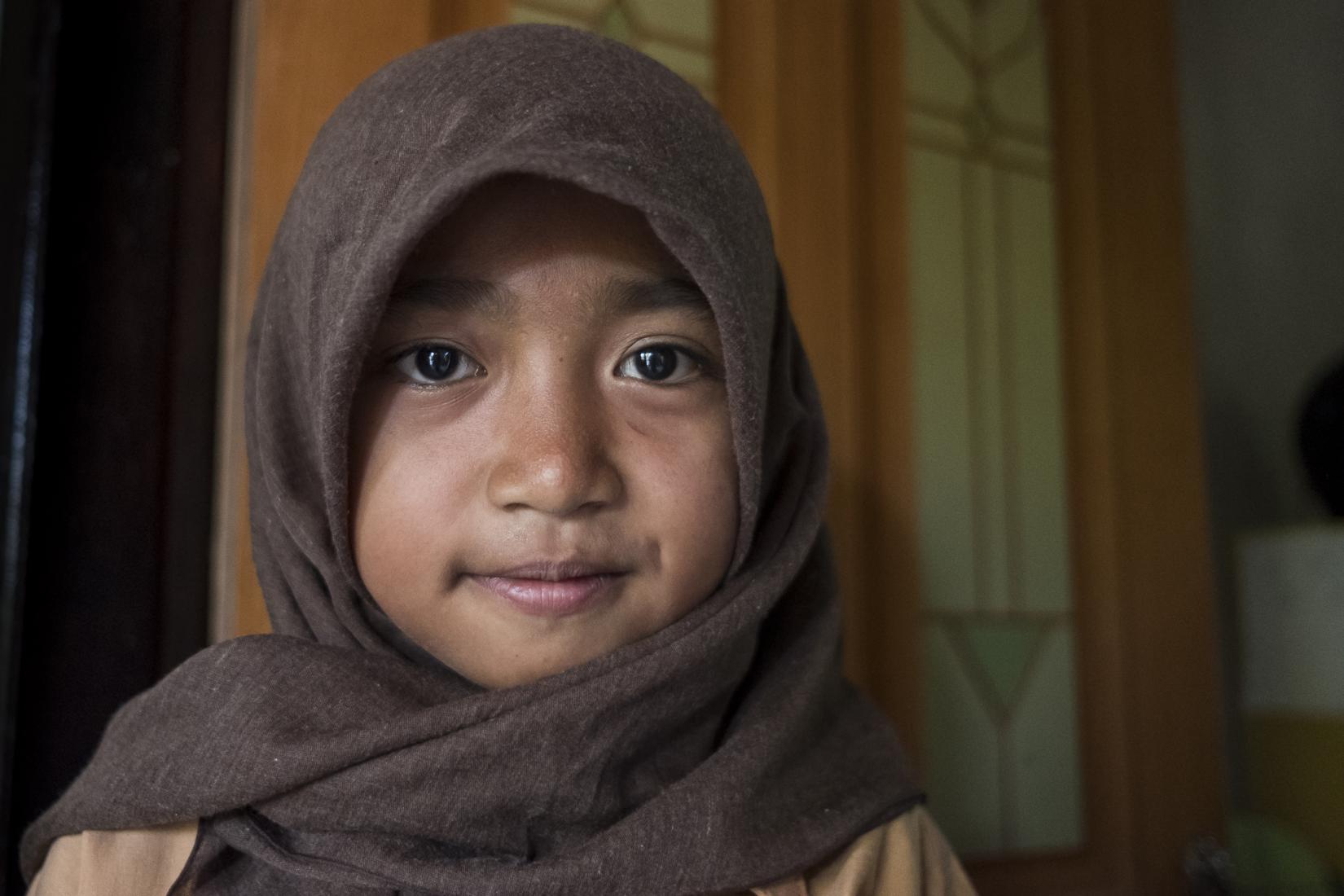In the past cattle farmers in Indonesia had a number of difficulties in raising healthy cattle. On the Indonesian island of Lombok, farmers like Murdah (pictured above) knew very little about best practice cow management, calf fattening and weaning, and breeding management. In 2010, building on previous cattle research work in Indonesia, ACIAR established a new project working with Murdah and other farmers in his village Karang Kendal in Lombok.
"MY HOUSE WAS A SLUM, WHEN RAIN COMES SOMETIME THE ROOF LEAKS, WE WANT TO CHANGE IT BUT WE DON’T HAVE MONEY, NOT YET. WE JUST LET THE LEAK AND MOVE TO PART WHICH IS DRY." - HARDIANTO.
The project is being led by Indonesian researchers Dr Tanda Panjaitan and Dr Dahlan Dahlanuddin. Dr Tanda, a graduate of University of Queensland, recalls "when I came to visit Karang Kendal Village the first time in November 2009, I saw that the cattle were very skinny, and didn't have enough feed." "It was then that I knew this was the right place to start to work."
The short video below illustrates some of the challenges for cattle farmers in Karang Kendal hamlet.
